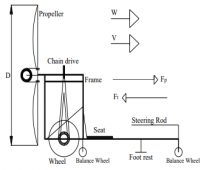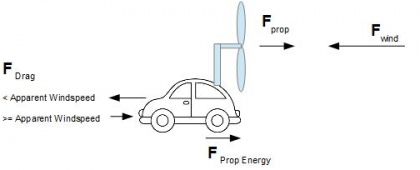svetz
Works in theory! Practice? That's something else
Watched this, it's a little mind-bending and while I trust the you-tuber, I think they got spoofed.
The claim is the prop blows backward against the wind and the prop is driven by the vehicle's forward motion.That just seems to break the laws of conservation of energy to me.
I get how boats on a broad reach can be moving faster than the wind, that makes great sense.
Is seeing believing? I don't think so. I suspect what he experienced was the craft surging faster than the wind due to the previous acceleration (stored energy in the mass of the craft and the spinning prop); had it kept going it would have slowed back to a steady-state. That doesn't explain the model on the treadmill that was talked about, but I haven't seen that video. 
Update:
So, I changed my vote to "real". There's a peer-reviewed paper saying it's possible (see post #6), and finally, in post #20 an illustration and explanation I can finally wrap my noggin around. Great claims require great proof, it just took me a while to get there.
The claim is the prop blows backward against the wind and the prop is driven by the vehicle's forward motion.
I get how boats on a broad reach can be moving faster than the wind, that makes great sense.
Update:
So, I changed my vote to "real". There's a peer-reviewed paper saying it's possible (see post #6), and finally, in post #20 an illustration and explanation I can finally wrap my noggin around. Great claims require great proof, it just took me a while to get there.
Last edited:





